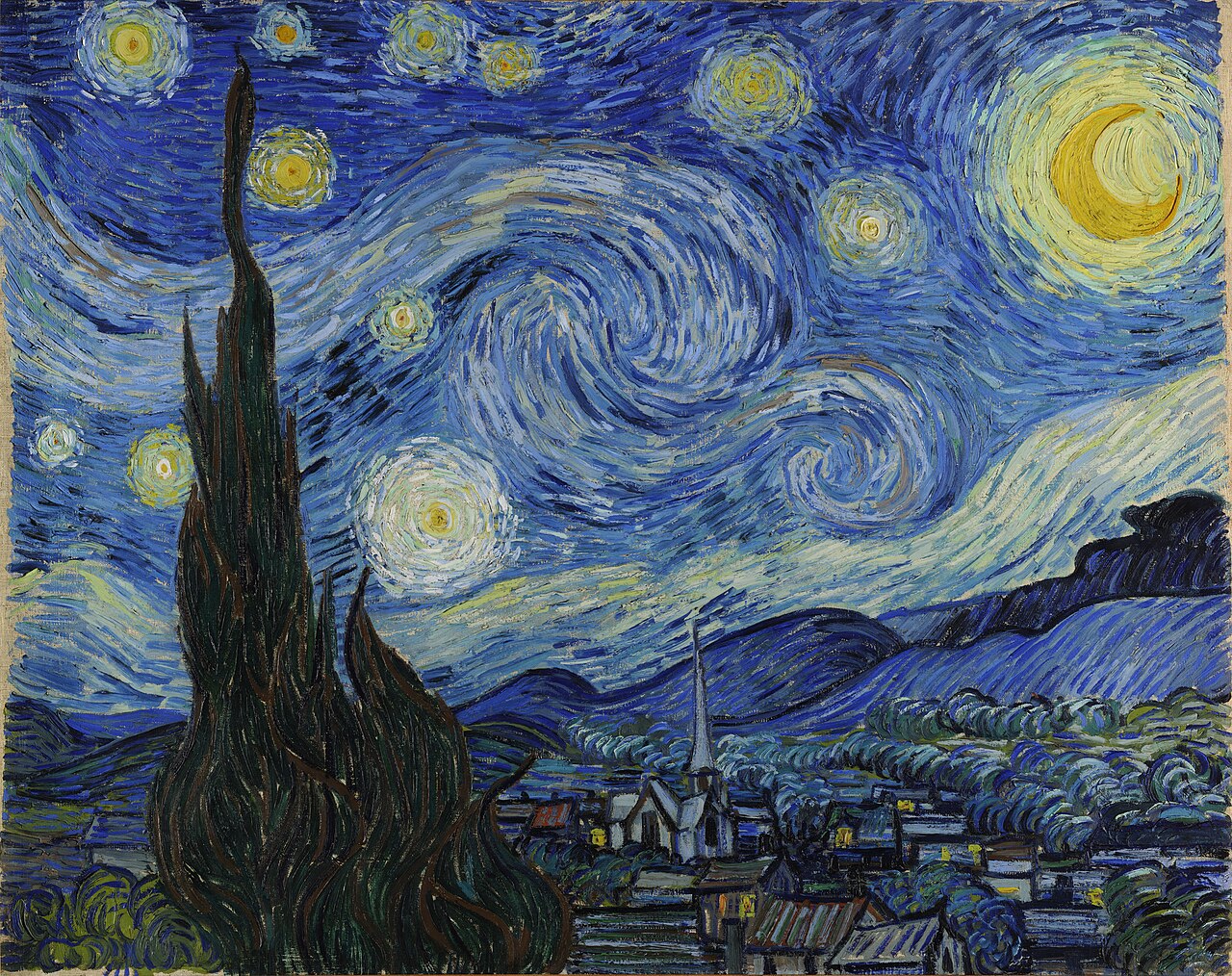'The Starry Night
Vincent van Gogh 1889'
Who Was Vincent Van Gogh?
Vincent Willem van Gogh (March 30, 1853 to July 29, 1890) was a post-impressionist painter whose work, notable for its beauty, emotion and color, highly influenced 20th-century art. He struggled with mental illness, and remained poor and virtually unknown throughout his life. Van Gogh died in France at age 37 from a self-inflicted gunshot wound.Van Gogh the Artist
In the fall of 1880, van Gogh decided to move to Brussels and become an artist. Though he had no formal art training, his brother Theo offered to support van Gogh financially. He began taking lessons on his own, studying books like Travaux des champs by Jean-François Millet and Cours de dessin by Charles Bargue. Van Gogh's art helped him stay emotionally balanced. In 1885, he began work on what is considered to be his first masterpiece, "Potato Eaters." His brother, Theo, by this time living in Paris, believed the painting would not be well-received in the French capital, where impressionism had become the trend. Nevertheless, van Gogh decided to move to Paris, and showed up at Theo's house uninvited. In March 1886, Theo welcomed his brother into his small apartment. In Paris, van Gogh first saw impressionist art, and he was inspired by the color and light. He began studying with Henri de Toulouse-Lautrec, Camille Pissarro and others. To save money, he and his friends posed for each other instead of hiring models. Van Gogh was passionate, and he argued with other painters about their works, alienating those who became tired of his bickering.Van Gogh’s Paintings and Artwork
Vincent van Gogh completed more than 2,100 works, consisting of 860 oil paintings and more than 1,300 watercolors, drawings and sketches. Several of his paintings now rank among the most expensive in the world; "Irises" sold for a record $53.9 million, and his "Portrait of Dr. Gachet" sold for $82.5 million. A few of van Gogh’s most well-known artworks include:'The Starry Night'
Van Gogh painted "The Starry Night" in the asylum where he was staying in Saint-Rémy, France, in 1889, the year before his death. “This morning I saw the countryside from my window a long time before sunrise, with nothing but the morning star, which looked very big,” he wrote to his brother Theo. A combination of imagination, memory, emotion and observation, the oil painting on canvas depicts an expressive swirling night sky and a sleeping village, with a large flame-like cypress, thought to represent the bridge between life and death, looming in the foreground. The painting is currently housed at the Museum of Modern Art in New York, NY.
